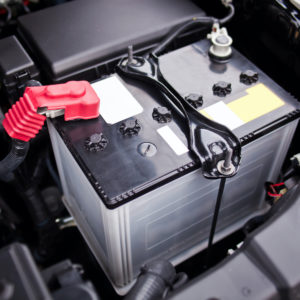Hybrid vehicles have a high-voltage battery pack, which consists of numerous modules, and one or more electric motors that assist the gasoline engine in propelling the vehicle. Once the powertrain control module (PCM) detects any inconsistency with the signals from the battery pack’s modules, the computer will set code P0A80.
What Does the P0A80 Code Mean?
Diagnostic trouble code (DTC) P0A80 stands for “Replace Hybrid Battery Pack.”
Most hybrid vehicles use nickel metal-hydride or lithium-ion battery packs, which have individual modules (made up of multiple cells) that are wired together using busbar connectors or cables. The modules are sometimes combined into “blocks” of two or more.

The hybrid vehicle battery management system (HVBMS) monitors the charging level of these battery modules or blocks and sends input signals to the PCM, such as individual module resistance, battery voltage, and temperature.
Once the HVBMS detects a weak module in the hybrid battery pack, the PCM will log DTC P0A80. Keep in mind that a code P0A80 will not automatically turn off the battery charging system. However, the hybrid system could get deactivated depending on the conditions that set the code.
A Closer Look at Hybrid Vehicle Batteries
A hybrid vehicle battery is actually a large group of smaller batteries wired in series. Since there are so many of these batteries and so many battery connections, there are always potential problems with the connections between these batteries. Furthermore, each individual cell has the potential for failure. Finally, any rechargeable battery will, over time, lose its ability to receive and store a charge. This is true of virtually any rechargeable battery. Hybrid and electric vehicle batteries are no different.
Hybrid vehicles have lots of electronic modules and components, including a battery control module that keeps tabs on all the cells in the big battery pack as well as the connections between the batteries. Some batteries are square, flat batteries, others are stacks of round batteries, etc., but corrosion is always possible where current is flowing through a connection and there are times when a mechanic can clean the “bus bar” that connects all the batteries and breathe a bit of new life into the battery. But sooner or later, the battery will need to be replaced.
That’s what the P0A80 code is about.
Note: The definition of code P0A80 may be different depending on the vehicle manufacturer. Consult the appropriate repair manual or repair database for the exact code definition.
What are the Common Causes of the P0A80 Code?
- A failure in the high-voltage battery assembly
- Loose, broken, or corroded busbar or connectors
- A problem in the hybrid battery monitoring system (e.g., a failed battery smart unit)
- A defect in the hybrid vehicle battery cooling system

What are the Common Symptoms of the P0A80 Code?
- Illuminated dashboard warning lights
- Inoperable high-voltage system
- Decreased fuel efficiency
- Deactivated electric propulsion system
- Vehicle stalls or refuses to start
How to Diagnose the P0A80 Code
DTC P0A80 is a generic trouble code that applies to OBD-II-equipped hybrid electric vehicles. However, keep in mind that while different makes can exhibit similar symptoms pointing to a P0A80 trouble code, steps for diagnosis and repair can vary from one vehicle to another.
If you’re not familiar with the process of diagnosing a code P0A80 by yourself, it’s a good idea to bring your vehicle to a licensed mechanic to ensure that the necessary steps are followed. This is especially true when you’re dealing with a potentially dangerous problem within the high-voltage system.
But if you think you have sufficient know-how and the right tools to conduct the test, we’ve gathered a couple of videos that show what the process might involve:
How to Fix the P0A80 Code
Attempting to fix a P0A80 trouble code can be a frustrating and confusing task if you don’t have the right tools and information for the job. If you’re not confident with your DIY skills yet, it’s best to have a licensed mechanic work on your vehicle instead.
But if you think you can address the P0A80 code on your own, make sure to have the right manuals before proceeding. Always consult a vehicle-specific repair manual or an online repair database to learn the appropriate diagnostic procedures for this code.
Any information provided on this Website is for informational purposes only and is not intended to replace consultation with a professional mechanic. The accuracy and timeliness of the information may change from the time of publication.




















